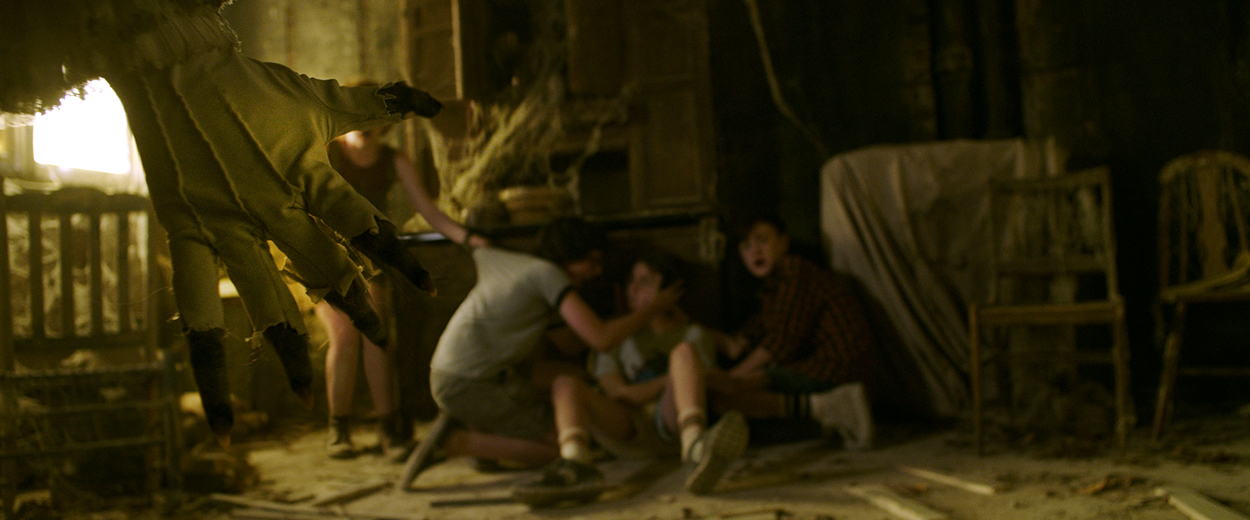By IAN FAILES
By IAN FAILES
In director Andy Muschietti’s It, based on Stephen King’s 1986 novel, Bill Skarsgård plays the psychopathic clown Pennywise, who also happens to be a trans-dimensional, shape-shifting alien child-eater terrorizing the town of Derry, Maine.
This new adaptation (a miniseries featuring Tim Curry was released in 1990) sounds like the stuff of nightmares. And It is. To bring those scares to the screen, the filmmakers leaned heavily on a group of makeup and visual effects collaborators with both practical and digital creations.
“It was more than just clown grease paint that was being wiped off. It was actually as if part of his skin was also becoming so decrepit, and it gave him this kind of hellish appearance.”
―Tom Woodruff Jr., Prosthetic Makeup Designer
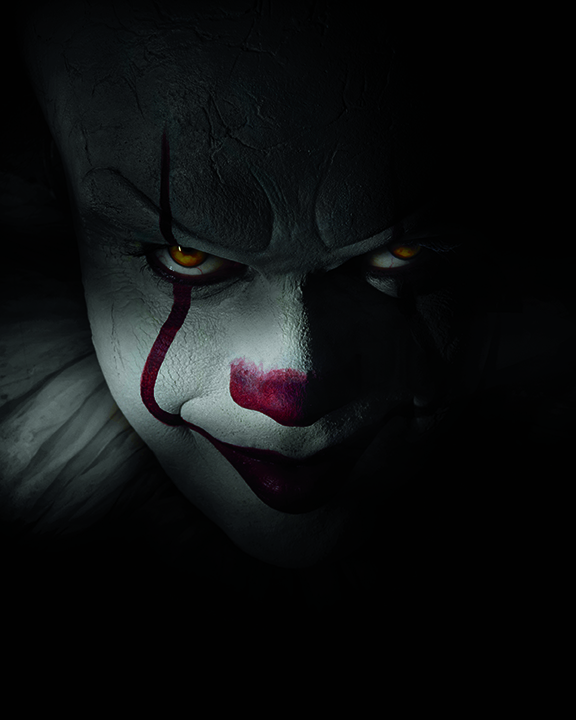
The face of terror
Pennywise’s frightening clown appearance involved, among other things, a pronounced forehead and significant amounts of caked-on white makeup. This design came from several concept artists on the film and the director himself. Prosthetic makeup designer Tom Woodruff Jr.’s Amalgamated Dynamics formed part of the design team, with fellow prosthetic makeup designers Sean Sansom and Shane Zander handling application on set in Toronto. Costume designer Janie Bryant looked after the character’s Harlequin-like garb.
“For Pennywise’s face, it was a relatively straight-forward foam latex appliance makeup that we created,” says Woodruff Jr. “To me it was all about a combination of the form; this much larger head that gave the character this weird feeling. Almost like a child-like kind of look. A larger head, a smaller face. And that in itself was very creepy.”
The clown makeup consisted of a set of prosthetic appliances that had cracked skin applied – the process took over three hours of application time. “It was more than just clown grease paint that was being wiped off,” notes Woodruff Jr. “It was actually as if part of his skin was also becoming so decrepit, and it gave him this kind of hellish appearance.”
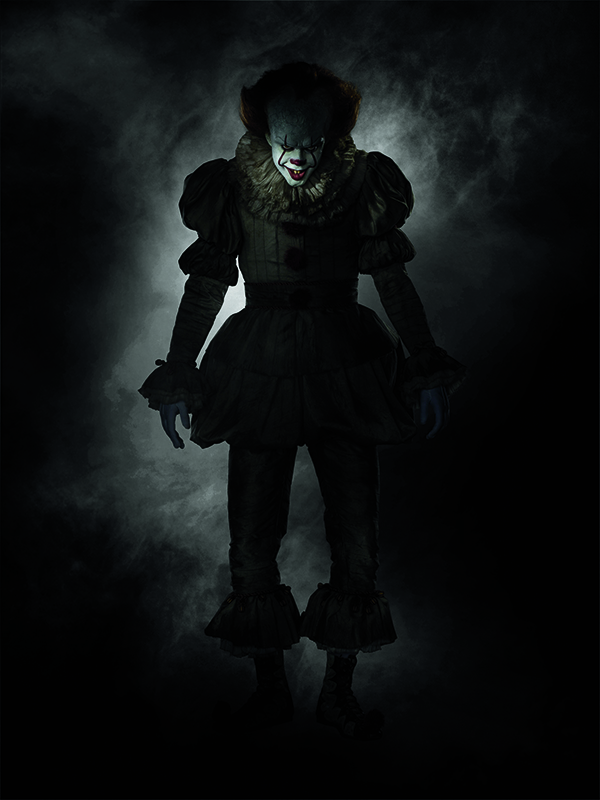
“(Pennywise) steps out (of a refrigerator) and untwists his body. We used the actor, and he did all the action. Then we figured out where his head should be and we replaced his body completely so that he could be a contortionist.”
―Nicholas Brooks, Visual Effects Supervisor
Pennywise’s mouth was designed directly by Muschietti to form an extended smile that almost becomes vertical on the outer edges of the lips. Eschewing clown tradition, the character has only a faint red nose.
“Andy also had us do a couple of different versions of teeth for him, which was really fun,” says Woodruff Jr. “We had one that Andy called the ‘Bunny Teeth.’ You look at a clown face and you see these large incisors and you feel like it’s this cartoon rabbit kind of thing. Not really overt, but more psychological, and I think it just shifts your perspective suddenly from something that’s cute and cuddly to something that is just creepy as hell. And deadly.”
Creature feature
In a showdown with the kids he has been tormenting, Pennywise transforms into an even more grotesque alien form with horrifying tendrils and tentacles. This aspect of the creature work was ultimately handled digitally, with Visual Effects Supervisor Nicholas Brooks helping Muschietti plan out the fight between the kids and the creature.
“What I pitched when I came on board,” relates Brooks, “was, rather than doing a storyboarded creature sequence, to instead actually choreograph an action sequence, choreograph the fights, motion capture it, and then do a development early before shooting that was based on the actual choreographed fighting.”
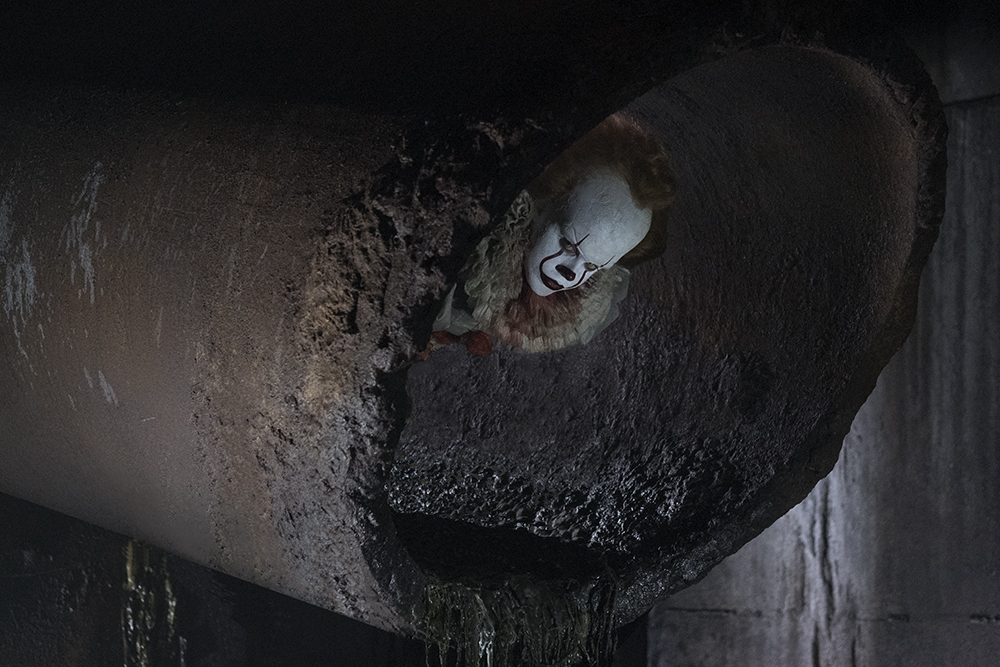
RodeoFX contributed previs for these creature scenes, and later much of the final CG creature work (other VFX vendors on the film included Cubica, Hollywood FX, atomic arts, Make FX, Savage, Soho and an in-house team). Brooks also rehearsed scenes with Skarsgård and the child actors carrying foam weapons “beating the sh** out of each other — they loved it!”
During the shoot, the different forms that Pennywise shape-shifts into were usually represented by something practical on set; a performer in costume or makeup, or Skarsgård himself. RodeoFX, under Visual Effects Supervisor Arnaud Brisebois, then delivered CG creature augmentations and transformations that ranged from jaw and maw work (dubbed ‘the kill mouth’) to Pennywise’s twisted and contorted body, and some unusual takes on what might normally be considered creature effects.
“For Pennywise’s face, it was a relatively straight-forward foam latex appliance makeup that we created. To me it was all about a combination of the form; this much larger head that gave the character this weird feeling. Almost like a child-like kind of look. A larger head, a smaller face. And that in itself was very creepy.”
―Tom Woodruff Jr., Prosthetic Makeup Designer
“Since Pennywise has got a head like a balloon and a clown mask on, it almost wasn’t like doing a creature per se,” notes Brooks. “Our skin didn’t have to be like tissue. It could be rubber or silk or costume. He’s caked in makeup so you don’t see the jaw muscles twitching before the transformation – it was almost more cartoony in a way.
“The design of it started with Andy,” adds Brooks. “And it was enormous fun to work on because it wasn’t tied in to physical anatomy or evolution or all the things that usually govern our work. It was meant to be ‘unrealistic’. It was rendered photoreal – and it looks like it’s there – but its movement and motion and ideas are a lot more fun than reality normally gives you.”
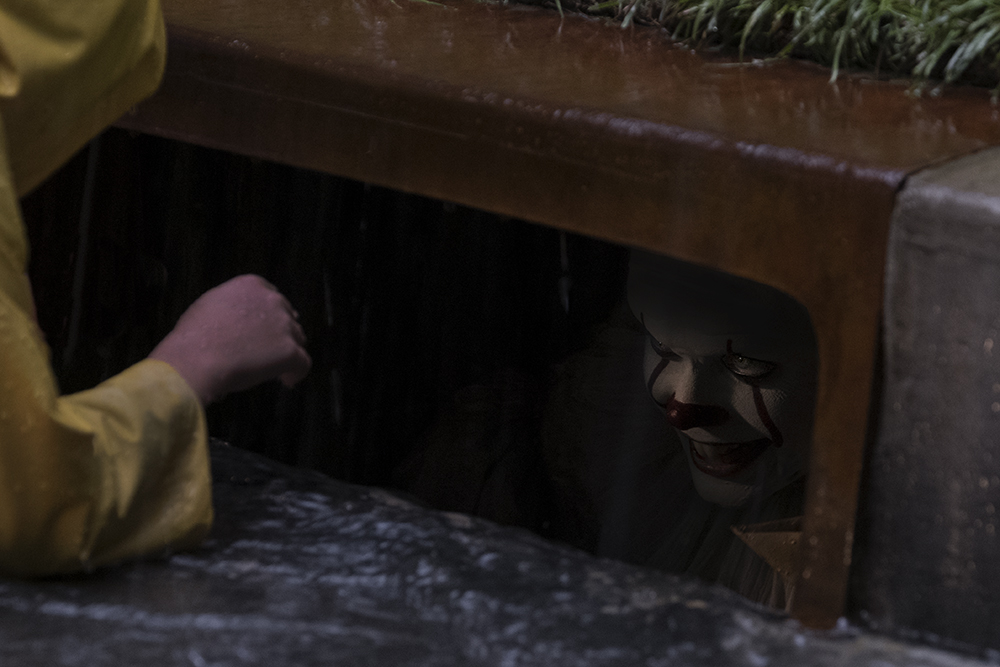
“What we were delivering were these playful versions of transformations as opposed to watching something in detail as it grows. It’s done with a more comic, or almost slapstick ridiculousness. It’s really fun and scary.”
―Nicholas Brooks, Visual Effects Supervisor
One scene features the kids trapped in a dank house when a refrigerator opens to reveal Pennywise inside in an impossibly contorted form. The final shot made use of both photography of Skarsgård and RodeoFX’s CG finesse. “He steps out and untwists his body,” describes Brooks. “We used the actor, and he did all the action. Then we figured out where his head should be and we replaced his body completely so that he could be a contortionist.”
For Brooks, this shot in particular and the transformations summed up what he sees as the director’s unique approach to realizing the supernatural horror in It. “What we were delivering were these playful versions of transformations as opposed to watching something in detail as it grows. It’s done with a more comic, or almost slapstick ridiculousness. It’s really fun and scary.”
